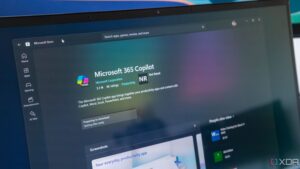Microsoft’s Debated Recall Feature Approaching General Release

Microsoft’s Recall Feature: A Game Changer with Controversies
In recent news, Microsoft is nearing the general release of its controversial recall feature. This feature, primarily associated with Microsoft Outlook’s email service, allows users to retract messages they’ve sent. While it brings potential benefits, it also raises questions about digital communication and privacy.
Understanding the Recall Feature
What Is the Recall Feature?
The recall feature in Microsoft Outlook is designed to enable users to unsend or retract an email that has been prematurely sent. This capability is particularly useful for correcting mistakes, whether accidental recipients were included or the message contained errors. When a recall occurs successfully, the original message is replaced with a notification that informs recipients an email has been retracted.
How It Works
When a user opts to recall a message, the following process is initiated:
- Initiation: The sender selects the email they want to retract from their sent items folder.
- Recall Action: The user clicks on the "Recall This Message" option.
- Notification: Recipients receive a notification if the recall is successful, or they will still see the original message if it fails.
For the recall to be effective, certain conditions must be met:
- Recipients must use Microsoft Outlook.
- The email must still be unread in their inbox.
- Both sender and recipient must be on the same Exchange server.
Potential Benefits
Error Correction
One of the primary advantages of the recall feature is the opportunity to correct mistakes. Given that digital communication often has speed over careful crafting, the ability to retract a message can mitigate misunderstandings and embarrassment.
Improved Communication
This feature can lead to improved professional communication. By allowing users to retract poorly worded or misleading messages, it can enhance the overall quality of email exchanges in a corporate environment.
Concerns and Controversies
Privacy Issues
Despite its benefits, the recall feature raises significant privacy concerns. Users may feel uneasy knowing that a sender can attempt to pull back a message they have received. This can lead to distrust and speculation on whether the sender is trying to hide something from the recipient.
Technical Limitations
The effectiveness of the recall feature is not guaranteed. Due to technical limitations, many recall attempts may not succeed, especially if the recipient has already read the email. Additionally, this feature only works within certain environments, specifically Microsoft Exchange, limiting its usability.
Unintended Consequences
Moreover, if a message is successfully recalled, the recipient may feel confused or misled, particularly if they have already acted on the original email. This could create further complications and lead to misunderstandings between colleagues or clients.
Alternatives to Consider
As some users express discomfort with the recall feature, there are alternatives for managing email communications:
Delay Sending: Many email services allow users to schedule a delay before a message is sent. This can provide a buffer period to review messages, reducing the need for recalling them afterward.
Drafting Tools: Encouraging the use of drafts can also minimize errors before sending. Users can take their time to ensure clarity and correctness.
- Clear Communication: Emphasizing clear and concise communication can lessen the likelihood of needing to retract messages in the first place.
Current Status and Future Developments
Microsoft’s recall feature is approaching a broader rollout, and it is likely that the conversation around its use will evolve as more users gain access to it. As organizations adapt to this tool, the effectiveness and acceptance of the recall feature will depend significantly on user experiences and corporate policies regarding email etiquette.
By understanding the benefits and limitations of the recall feature, users can make informed decisions about its application in their professional environments.






